ASTERIOS POLYP - Serio Comics 27
ASTERIOS POLYP written and drawn by David Mazzucchelli, published by Pantheon
A Master Finally Has A Masterpiece
When ASTERIOS POLYP was published in 2009, Publisher’s Weekly wrote:
“For decades, Mazzucchelli has been a master without a masterpiece. Now he has one.”
Mazzuccheli had previously worked in the 80s as an artist on Marvel’s DAREDEVIL comics with writer, Denny O’Neil, and then as an artist on DC’s BATMAN: Year One with writer Frank Miller, before starting independent work on an anthology of comics co-edited with his wife, the painter, Richmond Lewis, RUBBER BLANKET.
With writer/artist Paul Karasik he wrote and illustrated a graphic adaptation of the late novelist Paul Auster’s CITY OF GLASS in the 90s.
But it wasn’t until nearly 30 years into his career that he finished his first full-length original graphic novel, which took him 10 years to make.
And I agree with Publisher’s Weekly, it is most definitely a masterpiece.
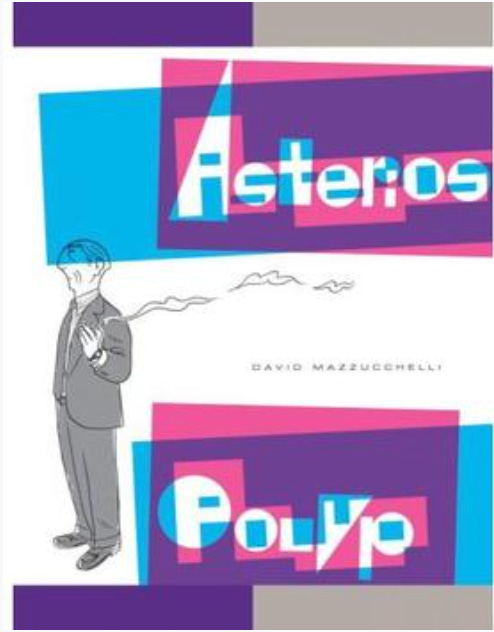
Exquisitely Particular, Transcendentally Universal
In Paul Auster’s THE NEW YORK TRILOGY, which includes THE CITY OF GLASS, he writes:
“Every life is inexplicable, I kept telling myself. No matter how many facts are told, no matter how many details are given, the essential thing resists telling.”
And yet Mazzuccheli’s book is remarkable in its ability to tell both an exquisitely particular story and a transcendentally universal one.
What is that story?
Meet Asterios Polyp: middle-aged, meagerly successful architect and teacher.
Aesthete and womanizer.
Whose life is wholly upended when his New York City apartment goes up in flames.
In a tenacious daze, he leaves the city and relocates to a small town in the American heartland. But what is this “escape” really about?
As the story unfolds, moving between the present and the past, we begin to understand this confounding yet fascinating character.
And how he’s gotten to where he is. And isn’t.
And we meet Hana: a sweet, smart, first-generation Japanese American artist with whom he had made a blissful life.
But now she’s gone. Did Asterios do something to drive her away? What has happened to her? Is she even alive?
All the questions get answered, eventually.
In the meantime, we are enthralled by Mazzucchelli’s extraordinarily imagined world of brilliantly conceived eccentrics.
Sharply observed social mores.
And deftly depicted asides on everything from design theory to the nature of human perception and of course astrology and spirituality.
The Wes Anderson of Graphic Novels
There’s a certain Royal Tenenbaums quality to Asterios Polyp.
With the graphic novel arriving less than a decade after the film.
In its milieu, characterizations, and narration.
And its dead-pan seriocomic tone and purposefully unnaturally bright aesthetics.
But what sets Asterios Polyp apart from its kin and predecessor is the depth of its redemptive story arc.
Partly because of its narrower focus on one character instead of a full family.
But more so I believe because of the hard-earned wisdom of its author.
Even if at 50ish, he still looked kind of 32 like Wes was when he made Royal T.
With An Understated Touch Of Semiautobiography As Well
There’s also an appreciated understated touch of semiautobiography to Asterios Polyp.
As the author’s real-life wife was Tokyo-born and a fine artist from a Rhode Island college like Asterio’s Hana.
What happens in the end? You’ll have to read and find out!
Influenced Me Without Even Knowing It
I was struck by how much this book seemed to resonate with me.
As if it had influenced my own graphic novel SHOULD WE BUY A GUN? with Gabriel Wexler without, at least me, even reading it before.
Not just the moments of purposefully unnaturally bright aesthetics.
Or moments of dead-pan seriocomic tone.
But also by the end with the Acknowledgments section.
When I had Gabriel make ours.
He said, Oh, this is perfect, I love ones with mysterious letters instead of full names.
Just like Mazzuchelli :)
Thanks so much for reading this post!
If you enjoyed it, consider upgrading to a Paid Subscription :)












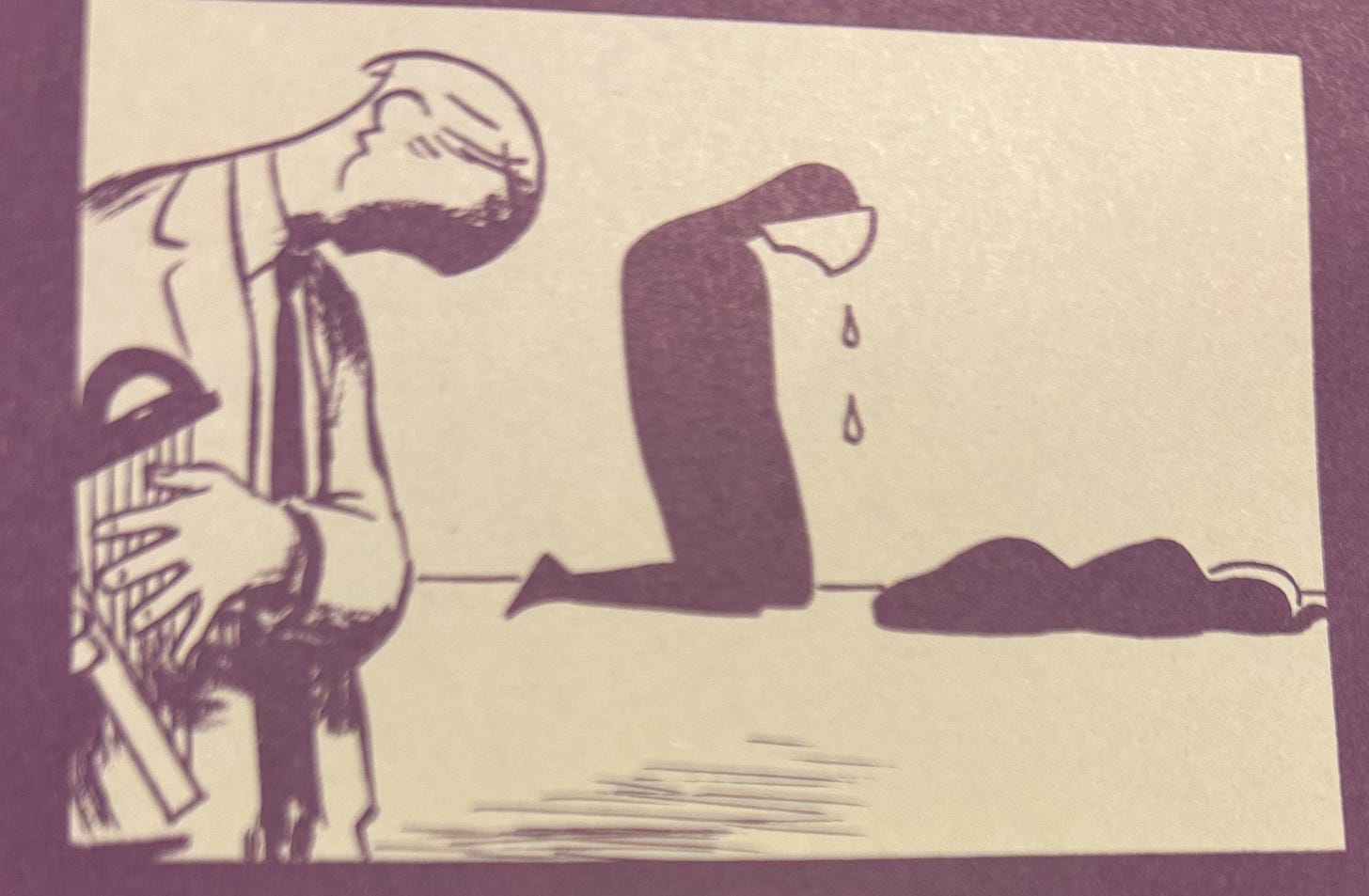

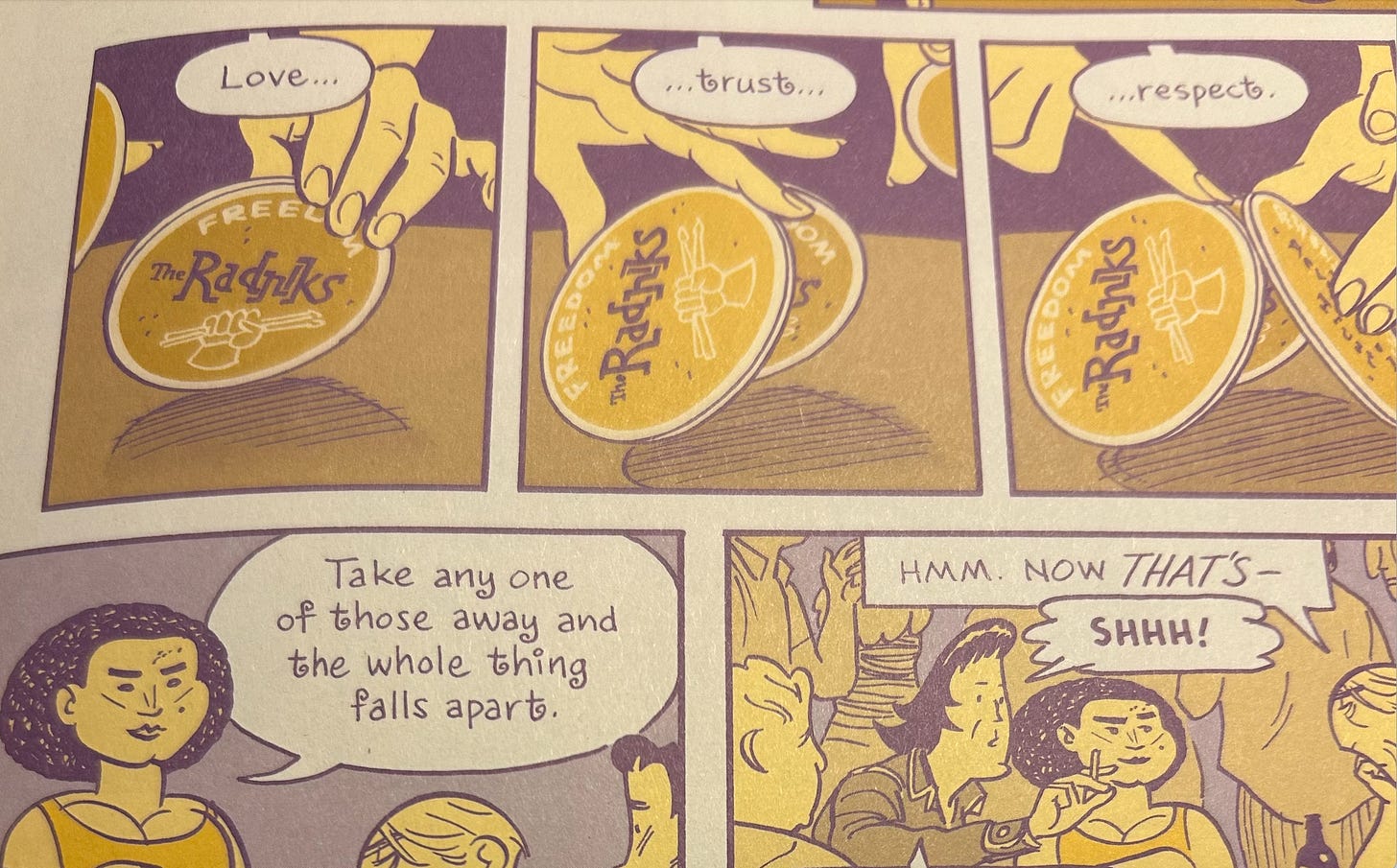





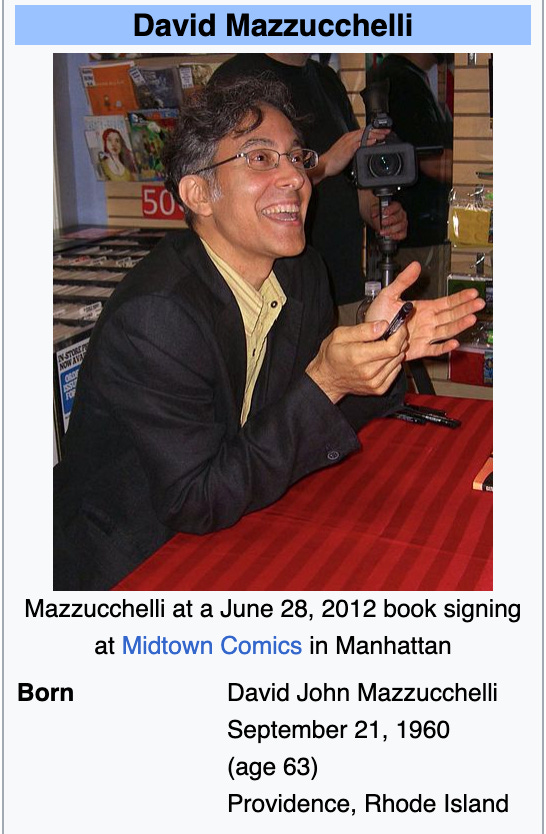
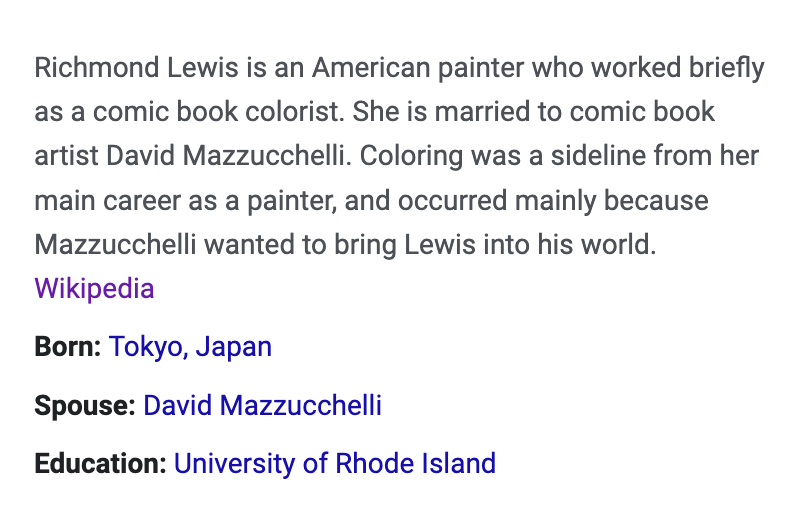




Ooh! I love his lettering style. Thanks for sharing!
I loved Mazuchelli's art when reading superhero comics as a teen - Batman Year One and Daredevil Born Again (both written by Frank Miller) are simply brilliant, they remain my favourite superhero comic art to this day. I bought issues 1 & 2 of Rubber Blanket when it came out, and City of Glass. When Polyp came out I havered - visually it felt to me that he'd moved into a new style, which I couldn't quite get along with. Your post has reminded me about it, I think I'll take another look, thank you!